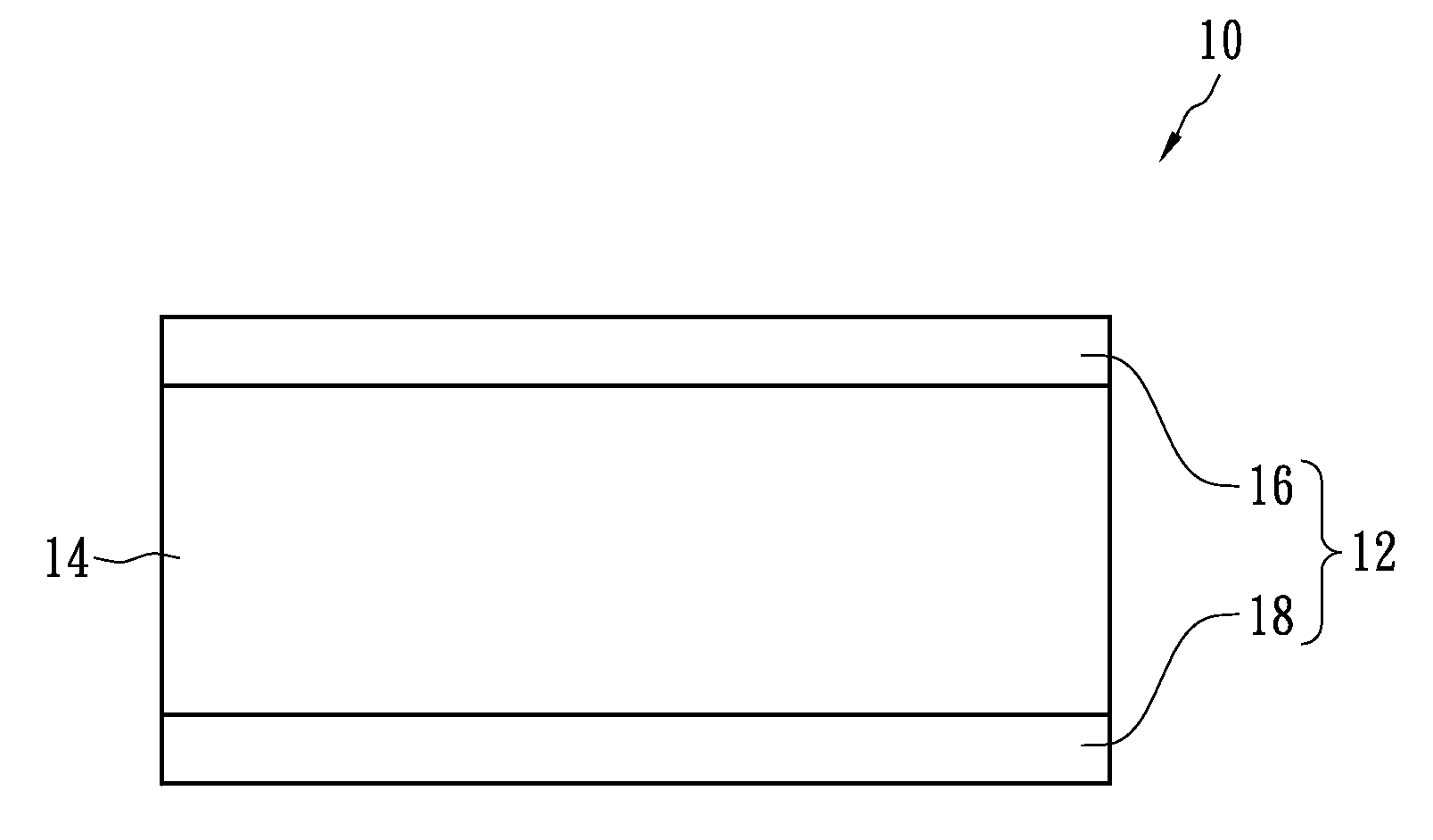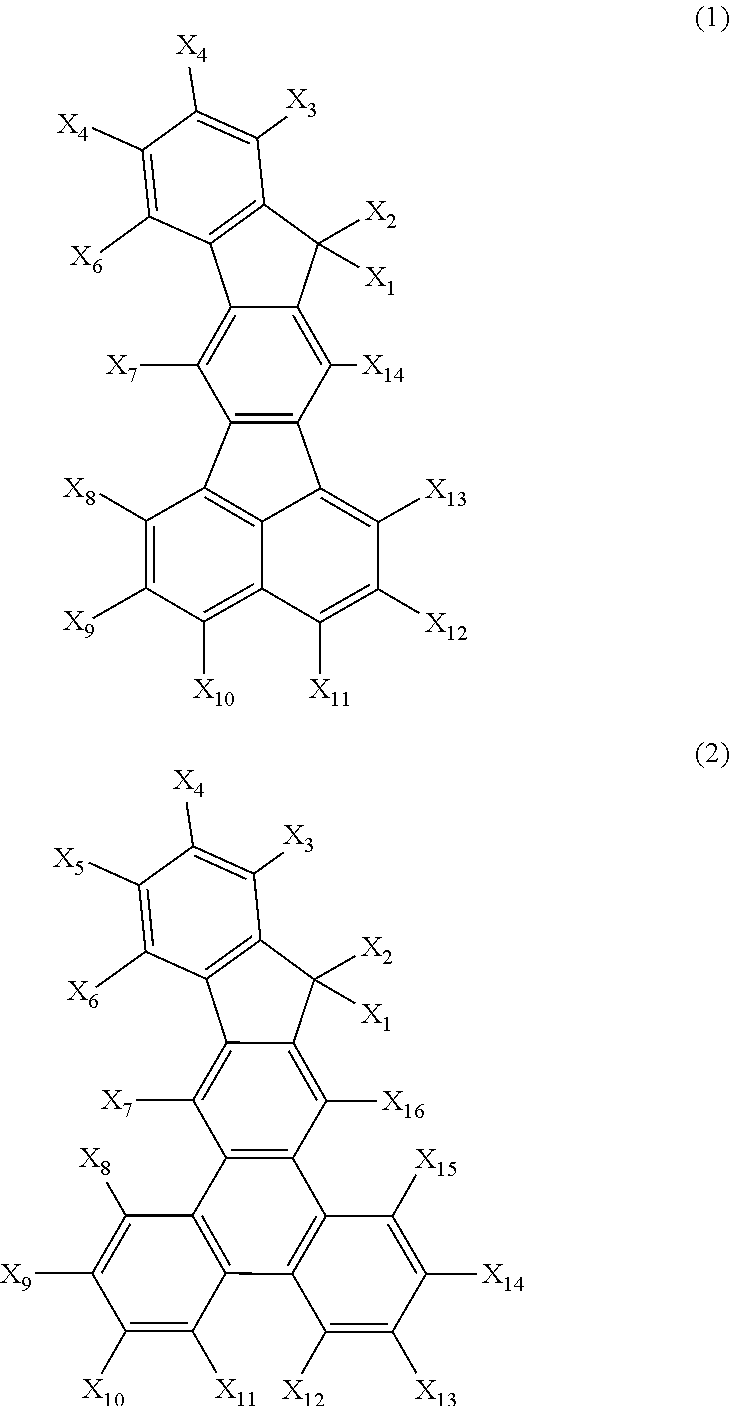Organic Electroluminescence Device
an electroluminescence device and organic technology, applied in the direction of solid-state devices, discharge tubes/lamp details, natural mineral layered products, etc., can solve the problem that the aromatic amine derivatives disclosed in u.s. patent no. 6,815,090 do not have sufficient lighting efficiency, and achieve low luminance efficiency and better luminance efficiency
- Summary
- Abstract
- Description
- Claims
- Application Information
AI Technical Summary
Benefits of technology
Problems solved by technology
Method used
Image
Examples
first embodiment
[0025]Y1 shows a fluorescent compound in accordance with a first embodiment of the present invention.
[0026]The organic electroluminescence device may be manufactured as follows:
[0027]First, a glass substrate is provided, and an indium tin oxide (ITO) layer of 150 nm is disposed on the glass substrate with an area of 100 mm×100 mm. After forming a pattern on the 10 mm×10 mm lighting area by lithography, the device is subjected to vacuum evaporation deposition at 10−5 Pa, so as to form a hole transporting layer NPB (N,N′-bis-(1-naphthyl)-N,N′-diphenyl-(1,1′-biphenyl)-4,4′-diamine) of 65 nm with a deposition rate of 0.2 nm / sec. Next, ADN((9,10-Di(naphth-2-yl)anthracene) and Y1 are deposited to form an light-emitting layer of 40 nm, in which compound Y1 is 4% of ADN, and the vapor deposition rate is 0.2 nm / sec. Next, AlQ3 (tris(8-quinolino)aluminum) is deposited as an electron transporting layer of 15 nm with a vapor deposition rate of 0.2 nm / sec. Lastly, lithium fluoride with a thickne...
embodiment 2
[0028]Y2 shows a fluorescent compound in accordance with a second embodiment of the present invention.
[0029]The organic electroluminescence device is manufactured according to the method of that shown in Embodiment 1, but with Y1 replaced by Y2.
embodiment 3
[0030]Y3 shows a fluorescent compound in accordance with a third embodiment of the present invention:
[0031]The organic electroluminescence device is manufactured according to the method for that shown in Embodiment 1, but with Y1 replaced by Y3.
PUM
| Property | Measurement | Unit |
|---|---|---|
| thickness | aaaaa | aaaaa |
| thickness | aaaaa | aaaaa |
| fluorescent | aaaaa | aaaaa |
Abstract
Description
Claims
Application Information
 Login to View More
Login to View More - R&D
- Intellectual Property
- Life Sciences
- Materials
- Tech Scout
- Unparalleled Data Quality
- Higher Quality Content
- 60% Fewer Hallucinations
Browse by: Latest US Patents, China's latest patents, Technical Efficacy Thesaurus, Application Domain, Technology Topic, Popular Technical Reports.
© 2025 PatSnap. All rights reserved.Legal|Privacy policy|Modern Slavery Act Transparency Statement|Sitemap|About US| Contact US: help@patsnap.com



